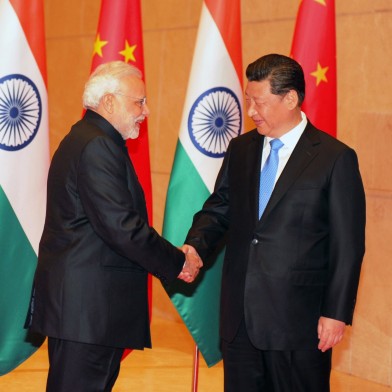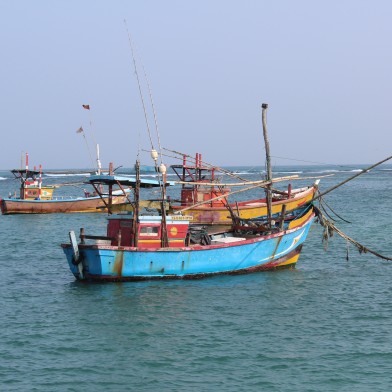India experts gathered on 27 August at the “Looking at India from the South Pacific” symposium to share critical observations on India’s growth and the relations between India and its economic partners in the Pacific. The following are highlights of the discussion at Victoria University of Wellington.
Factors driving India’s growth

Dr Rajat Kathuria (Director, CEO, Indian Council for Research on International Economic Relations, New Delhi):
Consumption is leading relative growth
“India’s growth today is around seven percent. Much of India’s growth in the peak years [2004-2008] was driven by investment. Today it is driven by consumption. Growth is an enabler for more employment, and reducing inequality.”
Challenges and advantages for India
“India is now growing in its structural transformation in an environment quite different to [what was experienced by] China, Japan and South Korea, which had grown in an environment which was quite open. These countries were able to grow and exploit global markets.
“India has been accused of being relatively closed. But that’s an unfair criticism, especially with rising tariffs, the challenge for India is even greater today – especially with anti-globalisation. We need to demonstrate that we are willing to embrace globalisation.
“India’s main advantage is in the service sector, with people travelling between countries, immigration being a driver.”
One million new workers a month
“In India today there is a huge demographic profile, with a young population which could be a make or break for India. The government recognises this.
“There is an initiative called ‘Make It India’, with the objective to bring in foreign direct investment (FDI) into India, and to create productive employment within the country – which can then be used to access markets abroad. Shore up private investment, shore up FDI, become part of global value chains, produce goods people want, link it with exports and manufacturing and you will get productivity.
“The service sector is not labour-intensive; the manufacturing sector is. With a million new workers per month, the manufacturing sector will absorb these huge numbers. The demographic dividend is important to capture. If you don’t, you’ll have armies of under- or unemployed people, which is not good for social cohesion.”
Looking beyond bilateral engagements
“If we have to engage more with countries like Australia and New Zealand, we have to look beyond these bilateral arrangements.
“Negotiations have often been blocked, and lack of access to services and dairy and agriculture remain very sensitive. Opening up the Indian agricultural sector is a difficult political decision to make. In the year before the election, it is unlikely that India will sign a free-trade agreement (FTA) which includes liberalisation of sensitive sectors like agriculture.
“Farmers have suffered. India loves consumers more than it loves farmers and it’s important that farmers are a priority and the focus of policy-making.
“The ability to negotiate a mutually beneficial FTA between New Zealand and India is there but it will take time. Talking to experts in New Zealand, it seems New Zealand is looking to diversify partners (away from Australia and China). India is the next growth story, but it sorely needs to improve its logistics and supply chain for agricultural products and that’s where New Zealand can offer valuable addition to the Indian economy.”
India is ready for business
“It’s one of the fastest emerging markets today. Technology is going to be positive and a deterrent. We are on the cusp of the fourth industrial revolution; this time it’s AI and automation, with the rise of the gig economy and disruption.”
The impact of growth

Professor Anthony P D’Costa (Director, Development Studies, School of Social and Political Sciences at the University of Melbourne, Australia):
“India has had high growth rates and yet we don’t see a corresponding increase in the number of jobs.
“Growth is being captured by a very small segment of society – the modern urban sector working largely in information and technology. 60 per cent of Indian workers come from the informal sector [self-employed by compulsion and living on the margins of poverty].
“Inequality has become very pronounced in India. [Because of] the lower per capita incomes in India, the economic growth process is very polarising.”
India’s engagement in the Pacific

Associate Professor Rani D Mullen (visiting fellow, Institute of South Asian Studies, National University of Singapore; Director, Indian Development Cooperation Research, CPR, India):
The Indo-Pacific strategy
“India – as a rising power and as a power that is increasingly engaged in its neighbourhood and abroad, and on its new thinking on the ‘Indo-Pacific’ – is quite keen on engaging in the South Pacific. This is not a new engagement, especially with the long-standing history of 100-plus years and the diaspora in the Pacific. This new thinking has led it to engage more with Pacific Island countries through soft power. The engagement is largely training, education and cultural engagement.
“India likes to point out that [unlike US AID or UK Aid] its grants and its engagements do not have conditions attached – it is demand-driven rather than supply-driven and there are no political or other conditionalities attached.”
Pacific engagement: India vs China
“I think it would be in the interests of New Zealand and other Pacific nations that diversity with other markets is a good thing.
“India is the new great game and in rivalry with China. It’s important for countries to look at the kind of investments that China proposes and the repayment rates and high interest rates. Those are important to keep in mind, Tonga for example.
“When China started building harbours and ports close to India – in Sri Lanka, Pakistan, Myanmar, close to the border – India was taken by surprise. India wants to establish good working relationships that might lead to better economic engagement. That has been part of the driver more recently for engagement with the South Pacific.”
Chinese port investments in the Pacific
“China might invest, but what happens to countries when they can’t pay back the loan? They need to be careful about the long-term consequences. There might be good reasons why New Zealand and Australia are not offering these kind of loans to Tonga. These kind of loan arrangements can have a strategic impact, not seen with traditional donors. These neo-colonial actions create long-term consequences.
“Many of these ports the Chinese are building are dual-purpose ports, not only commercial. It’s a very short stop away from letting military come and dock there also, so I think one has to be aware of the economic and security implications, if there should be a sense of threat arising.”
Partnerships — not ‘aid’
“The ‘Look East Policy’ under Prime Minister Modi has been rebranded as the ‘Act East Policy’ to show they’re more engaged in the immediate neighbourhood and trade linkages with ASEAN and beyond. The engagement in the South Pacific is a logical extension of the Act East Policy.
“The preferred term is ‘partnership’ instead of ‘aid’, which is a neo-colonial term.
“When India engages in development partnerships and foreign interest relationships, it’s important that these partnerships are two-way streets.
“It’s perhaps a more honest relationship that both partners get something out of. The exchange is reassurance that the Pacific countries will support India’s bid to get on the UN Security Council instead.”
Indian foreign policy at a crossroads

Professor Rajesh Rajagopalan (Centre for International Studies, Jawaharlal Nehru University, New Delhi, India):
“It’s a wake-up call. We are facing challenges as a consequence of China’s rise. There is potential for peaceful or tense, conflictual world foreign policy.
“India’s military is larger than China’s but it is not modernised, like China’s. That is exactly what India needs to do.
“To understand the current dilemma India faces – look at India’s foreign policy paradoxes. India has been irritatingly moralistic in its foreign policy. It has aligned with non-nuclear policy – yet it has built nuclear weapons.
“Multilateralism is of little use and traditional international partners – such as BRICS, SCO, IBSA and RIC and NAM* – will not necessarily give support as they used to. China is likely to gain more support.
“All of those conditions are undergoing fundamental transformation with China’s rise. For the first time, India is facing significant threat to its own domination in the region.
“Resources are now insufficient to deal with China’s power because China is now five times India’s size, economically speaking, so it makes for a very different balance of power in the region.
“India will now have to rely on allies in the region.”
– Asia Media Centre
*Acronyms
- BRICS: Five major emerging national economies – Brazil, Russia, India, China and South Africa.
- SCO: Shanghai Cooperation Organisation, or Shanghai Pact.
- IBSA: The IBSA Dialogue Forum (India, Brazil, South Africa) is an international tripartite grouping for promoting international cooperation among these countries.
- RIC: Russia, India and China.
- NAM: The Non Aligned Movement is a group of states not formally aligned with any major power bloc. As of 2012, the movement has 120 members.



